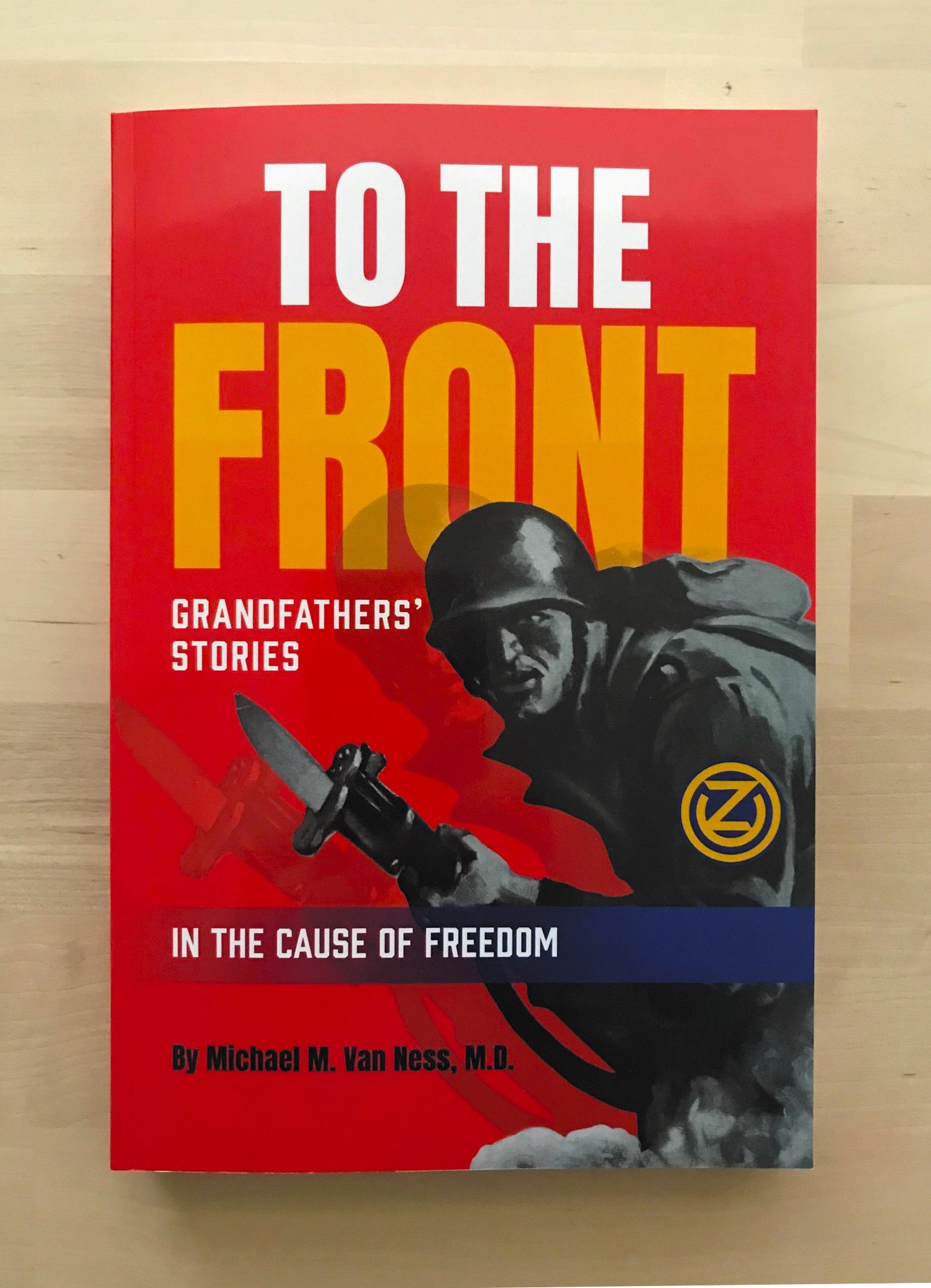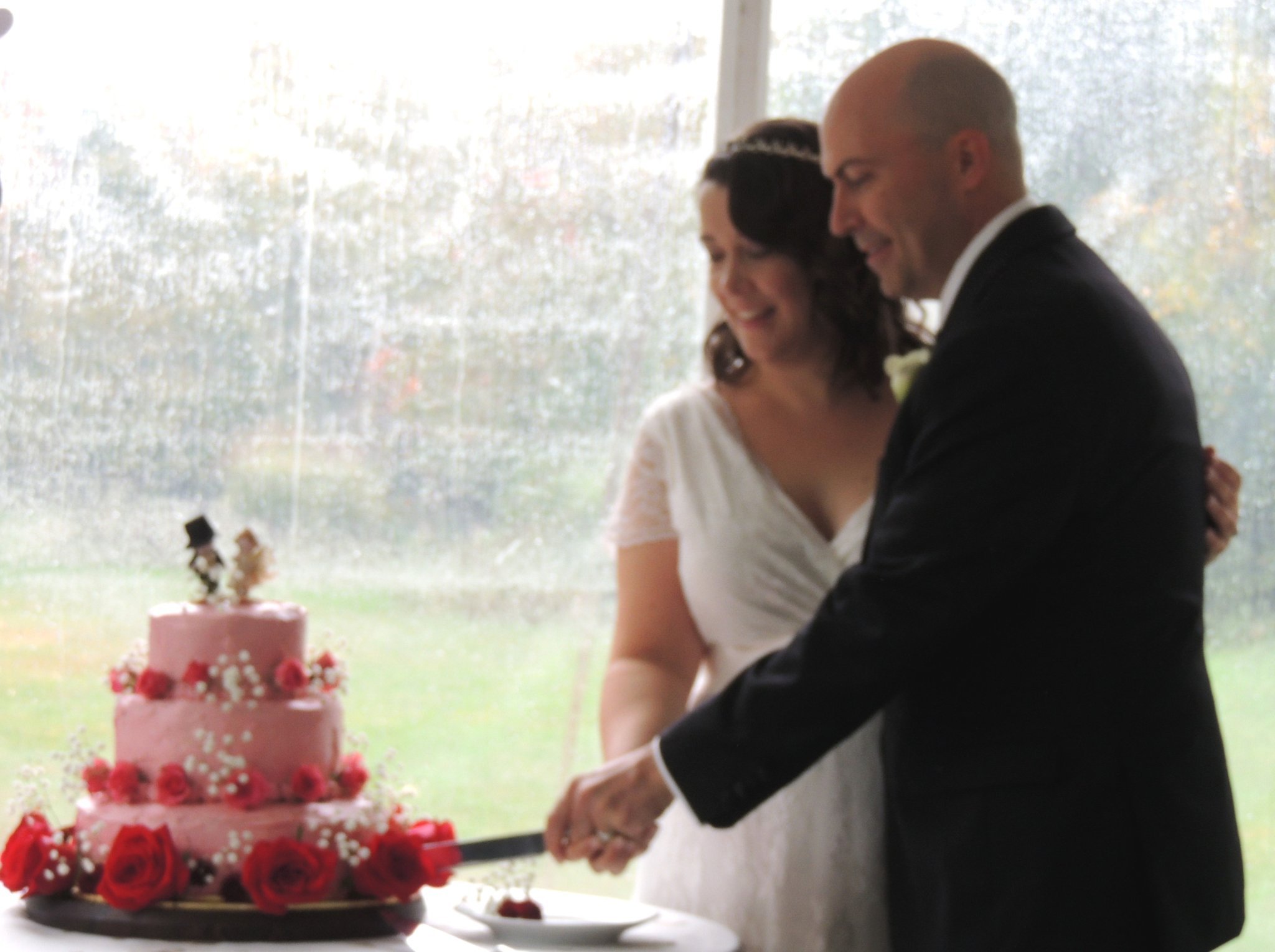Michael M. Van Ness, M.D. published the first softcover edition of his book entitled To the Front: Grandfathers’ Stories in the Cause of Freedom with Modern Memoirs in 2022. This Assisted Memoir took twelve months from the day he first contacted us to the day books arrived on his doorstep. While he is selling this edition of his book (see purchasing details below*), he also engaged our services to publish an expanded hardcover version with an extensive genealogy section for his family and friends. In anticipation of Veterans Day, we asked Van Ness to reflect on what the publication process was like for him, and what it has meant to share his book with others.
1. Before this book, you published General in Command: The Life of Major General John B. Anderson in 2019, telling the story of your maternal grandfather and his leadership of the largest combat corps in Europe in World War II. What inspired you to write the recent, second book that is also in large part about Anderson? How did you want to make it different from your first?
Michael Van Ness: As I wrote General in Command, I realized I had grown up amongst heroes, but I didn’t know it. My home of Washington, D.C. in the 1960s was a hotbed of retired officers who had served with distinction in the Second World War. They got together to drink at the Army-Navy Club, but grandchildren like me were rarely privy to their tales of love and loss, triumph and despair. So I used diaries and letters for source material for General in Command. Friends reading that first book responded with their own family stories, stories of both desperation and redemption. I thought there was lots there for another book. I also reflected upon my own career and the many men I attended during my own service as a physician at Bethesda Naval Hospital. To the Front expands beyond the story of Anderson in General in Command to stories of other men of high rank and low—soldiers, sailors, and aviators—and their families, locked in desperate battles for survival in both war and peace.
2. In To the Front, some of the narrative is recreated dialogue between characters in the book and you. Why did you choose this literary device, as opposed to writing the stories in the third-person point of view?
Michael Van Ness: Recreating dialogue brings the characters to life. I wanted to use my imagination and memory of events to help the reader experience the moment, to be with me whilst I spoke with heroes large and small.
3. What drew you to the Modern Memoirs editorial and design process?
Michael Van Ness: After my first book, I knew I needed a publisher who cared deeply, who could be a partner in writing and publishing To the Front. Ali de Groot and Megan St. Marie proved to be those partners. Megan challenged me to dig deeper, to find the truth of the stories, to reveal the power and significance of the subject. Her questions were akin to those posed by the best psychologists—open-ended questions like, “Why is that important?” Or more pointedly, “Who cares? What is the significance here?” The text evolved from a list of random incidents to a coherent narrative of discovery, highlighted by carefully selected photographs and maps that were integrated into the layout by Nicole Miller. Nicole’s cover design, adapted from art in a 1943 magazine, captures the spirit of the times, a fierce determination to win the war, an unshakable confidence in our fighting men.
4. You engaged Modern Memoirs to research your genealogy and to summarize the findings in a family history section of the expanded edition that will be distributed privately to family and friends. How did this genealogy work enhance your book project?
Michael Van Ness: Liz Sonnenberg’s genealogy uncovered veins of rich family history that were long lost and deeply buried. For example, I had always known the stories of my maternal grandmother’s Confederate soldier relatives. Who knew there were Union soldiers on my father’s side? Not me. I came to discover aspects of family life that were more complicated and more nuanced than expected. Thus, I am now determined to delve deeper still into the unknown territory of my father’s family, previously hidden by distance and time, a valuable addition for future generations and an ennobling process for me.
5. What outcome surprised you most in the publication process? What did you learn along the way—about yourself, your family, or our country?
Michael Van Ness: I was surprised by the rigor of the publication process. Since my partners at Modern Memoirs kept every deadline they set for themselves, I felt duty bound to keep every deadline they set for me. Thus, the project never languished but moved forward steadily from beginning to end. Having said that, when I needed a little more time, Ali and Megan reminded me that I must take all the time I needed. So the partnership was one of give and take. In the end, I realized the stories I was telling were the sermons these men and women preached with their lives, doing the best they could under circumstances that none of us ever want to know. To honor them, I resolved to make the text as good as it could be. Modern Memoirs helped me to achieve that goal.
1947 illustration used for the endsheets of the expanded edition of To the Front: Grandfathers’ Stories in the Cause of Freedom by Michael M. Van Ness, M.D.
Image attribution: Created by T/Sgt. Walter H. Croft, T/4 Elwood P. Engel and Travers E. Dowling, and T/5 Russell H. Hadden of the XVI Corps Historical Association and the Infantry Journal Press, Washington, D.C. (1947)
*Interested in reading more? Purchase Van Ness’ recent book at the link below:



















